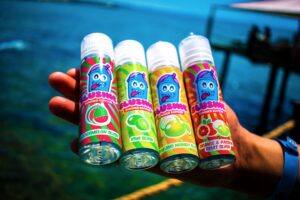Recently, the FDA has banned the JUUL device and four types of JUUL pods. What is the impact for young people and vaping? It’s a start but unfortunately more needs to be done.
Vaping for teens exploded in popularity in 2011 with JUUL quickly becoming one of the most popular e-cigarette products. The product was pre-filled with one of several “flavors” and its sleek design was considered “cool” by young people. With teen use on the rise, in 2018 the FDA began investigating ways to regulate vaping specifically to reduce teen use. In September of 2020, “flavored” pre-filled vape pods were officially regulated, allowing JUUL and other manufacturers to only sell tobacco and menthol flavored products. One major problem with the regulation, the FDA left “single use/disposable devices” untouched by this regulation. Single use/disposable device manufacturers like Puff Bar were still able to sell flavored products. Young people took advantage of this loophole and started purchasing disposable vape cartridges and by April 2021, Puff Bars, was now the most popular device. “Puff Bar still sells fruit flavors and teens report using the brand over Juul by five to one.”1

Currently across all markets there is estimated to be 7,000 different flavors available to consumers ranging from candy and cereals to fruit flavors. “Flavored products are driving youth use. In fact, 85% of youth e-cigarette users use flavored products, with fruit, candy/desserts/other sweets, mint, and menthol reported as the most popular flavors.”2
The good news, vaping amongst teens was trending down by 1.8 million fewer teen users at the beginning of the pandemic, however being back in school and away from home saw vaping once again becoming a major concern.
On June 24th, 2022 the FDA banned the JUUL device and four types of JUUL pods, stating “There is also no way to know the potential harms from using other authorized or unauthorized third-party e-liquid pods with the JUUL device or using JUUL pods with a non-JUUL device.”3 To stay on the market, JUUL must show there are benefits of e-cigarettes and show that young people are unlikely to get addicted to them even though they contain nicotine. This last part, of course, will be a challenge to prove since nicotine is a highly addictive substance.
While the regulations that have been put in place since the “vaping craze” took off is certainly a step in the right direction, there clearly needs to be a shift in the single use/disposable product regulation. We know that young people can be creative and resourceful when given the opportunity and sometimes with painful consequences. We need to provide less access for young people to use these products that could potentially impact the rest of their lives. The JUUL ruling is a step in the right direction, but clearly more needs to be done. Since young people’s brains are still developing, they do need support from the entire community as they mature and become fully independent.
- https://www.cbsnews.com/news/puff-bar-e-cigarette-ceos-fda/
- https://www.tobaccofreekids.org/what-we-do/industry-watch/e-cigarettes
- https://www.fda.gov/news-events/press-announcements/fda-denies-authorization-market-juul-products
 Written by: Liz Garcia-Senior Health Educator, Candor Health Education
Written by: Liz Garcia-Senior Health Educator, Candor Health Education
